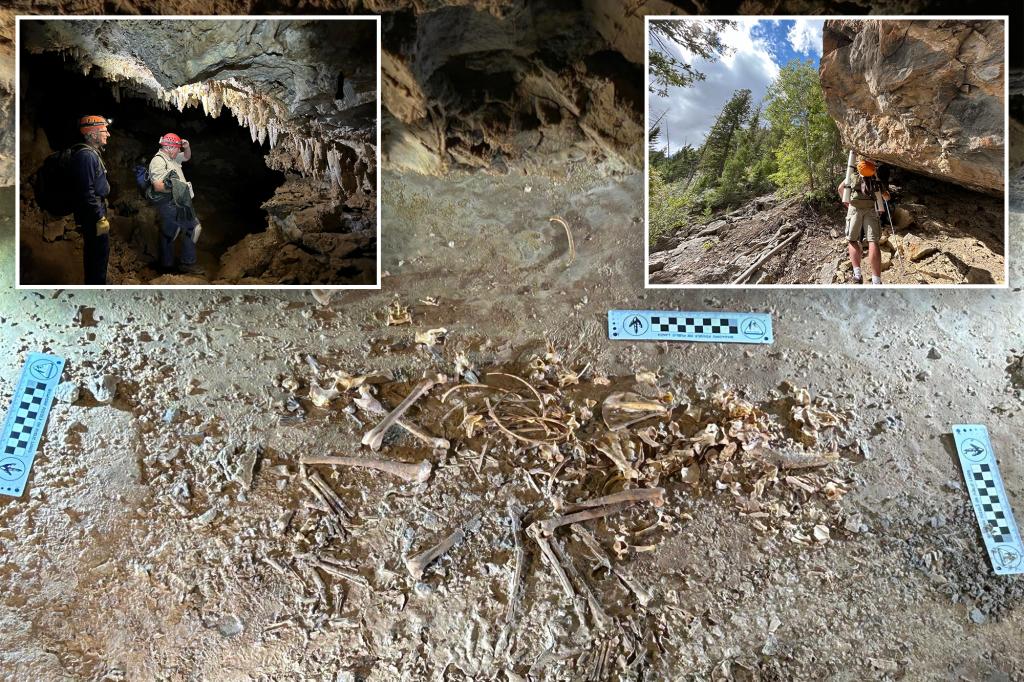A Glimpse into the Pleistocene: Unveiling Roxy, the Ice Age Red Fox
Deep within the recesses of Whiterocks Cave, nestled high in the Uinta Mountains of northeastern Utah, a remarkable discovery lay hidden for millennia. Encased in the silent darkness, a near-complete skeleton of a red fox, later affectionately named Roxy, patiently awaited rediscovery. This extraordinary find, dating back approximately 26,000 years to the late Pleistocene epoch, offers a rare glimpse into the fauna of the Ice Ages and provides valuable insights into the evolution and distribution of the red fox species in North America. Roxy’s emergence from the depths of the cave represents not only a significant paleontological discovery but also a testament to the collaborative efforts of scientists, cavers, and museum professionals.
Unearthing a Paleontological Treasure: The Discovery and Significance of Roxy
The discovery of Roxy was a collaborative effort involving a team of scientists from the Utah Division of State Parks and the USDA Forest Service Ashley National Forest, working alongside a group of experienced Utah cavers. Located in a remote section of Whiterocks Cave, at an elevation of approximately 8,600 feet, the fox skeleton was found partially articulated, lying on its left side, a testament to its undisturbed preservation. Radiocarbon dating confirmed the skeleton’s remarkable age, placing it firmly within the late Pleistocene, a period characterized by glacial cycles and dramatic shifts in climate and ecosystems. This discovery is particularly significant as it represents one of the oldest directly dated records of the red fox species in North America and the first such find in Utah.
Roxy in Context: The Red Fox in North America During the Pleistocene
Red foxes (Vulpes vulpes) are among the most widely distributed terrestrial carnivores in the world, boasting a range that spans across much of the Northern Hemisphere. Their arrival in North America is believed to have occurred between 300,000 and 130,000 years ago, originating from Eurasian populations. During the Pleistocene epoch, red foxes established themselves predominantly in the western and northern regions of North America. Roxy’s presence in northeastern Utah during this period sheds light on the species’ range and habitat preferences during the Ice Ages, offering valuable data for reconstructing past ecosystems and understanding the impact of climatic changes on faunal distributions.
A Challenging Retrieval: Bringing Roxy to Light After Millennia of Darkness
While Roxy’s discovery occurred several years prior to its retrieval, the challenging logistics of extracting the fragile bones from the remote and difficult-to-access cave system delayed the process. Careful planning and coordination were required to ensure the safe removal of the skeleton. Finally, in the summer of 2023 (assuming the news article is recent), a team of nine embarked on the arduous expedition, navigating the cave’s intricate passages to retrieve Roxy. The operation, lasting nearly 16 hours, highlighted the dedication and expertise required to preserve such delicate paleontological treasures.
Unraveling the Mystery: How Did Roxy End Up Deep Inside the Cave?
The circumstances surrounding Roxy’s presence deep within Whiterocks Cave remain a subject of speculation. The team of paleontologists and geologists involved in the discovery have pondered the various possibilities that could explain how a red fox ended up nearly half a mile into the cave’s dark recesses. Did it seek shelter from harsh weather conditions? Was it pursuing prey or exploring unfamiliar territory? Or did some unfortunate accident lead to its demise within the cave’s depths? While definitive answers may remain elusive, the discovery itself prompts fascinating questions about the behavior and ecology of Ice Age red foxes.
Roxy’s Legacy: From the Depths of the Cave to the Museum Display Case
Following its retrieval, Roxy’s skeleton underwent careful examination and analysis by scientists. The remarkably well-preserved bones offer a wealth of information about the animal’s physical characteristics, diet, and overall health. This data will contribute significantly to our understanding of red fox evolution and adaptation during the Pleistocene. After these studies are concluded, select bones from Roxy’s skeleton will be put on display at the Utah Field House of Natural History State Park Museum in Vernal, allowing the public to marvel at this Ice Age relic and learn about the fascinating story of its discovery. Roxy’s journey, from the darkness of the cave to the museum display case, serves as a reminder of the rich paleontological heritage embedded within the landscapes of Utah and the importance of preserving these remnants of the past for future generations.










